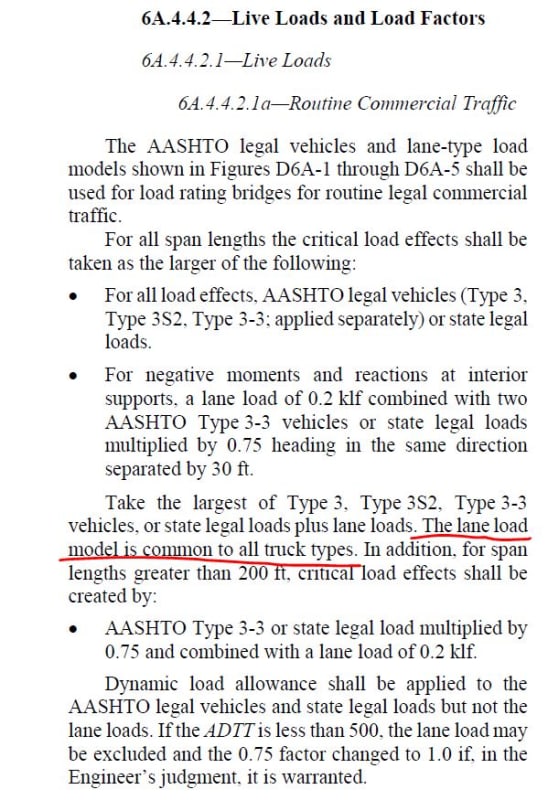Usually bridges are load rated for all three AASHTO trucks and lane loads to determine the governing loading and
governing load rating. A safe load capacity in tons may be computed for each vehicle type (see Article 6A.4.4.4). When
the lane type, load model governs the load rating, the equivalent truck weight for use in calculating a safe load
capacity for the bridge shall be taken as 80 kips.
AASHTO legal vehicles, designated as Type 3, Type 3S2, and Type 3-3 are sufficiently representative of
average truck configurations in use today, and are used as vehicle models for load rating. These vehicles are also
suitable for bridge posting purposes. Load ratings may also be performed for state legal loads that have only minor
variations from the AASHTO legal loads using the live load factors provided in Table 6A.4.4.2.3a-1 for the AASHTO
vehicles. It is unnecessary to place more than one vehicle in a lane for spans up to 200 ft because the load factors
provided have been modeled for this possibility.

